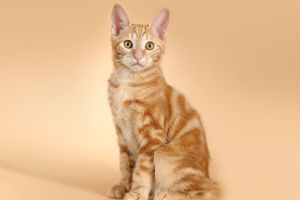The striking black-and-white stripes of zebras have fascinated scientists, nature lovers, and storytellers alike for centuries.
But why do zebras have stripes at all? Are they merely decorative, or do they serve a functional purpose?
With more research, scientists have proposed various theories that dive into how these patterns might be essential for the zebra's survival.
Let's explore some of the most compelling ideas on what makes zebra stripes such an evolutionary marvel.
1. Camouflage: Blending Into Their Environment
One of the earliest theories was that zebra stripes help them camouflage from predators. Unlike many animals, zebras don't rely on subtle earth tones or a single color to blend into the grasslands. Instead, their black-and-white pattern may confuse predators, especially in motion. In the vast plains of Africa, zebras often move in herds, and their stripes might create a visual illusion that makes it difficult for predators to single out an individual target. When a group of zebras runs together, their stripes could potentially blend into a chaotic, moving pattern, making it hard for predators like lions to focus on a specific animal.
2. Dazzling Predators: Motion Dazzle Effect
An offshoot of the camouflage theory is known as the “motion dazzle” effect. This theory suggests that the stripes may confuse predators in another way – by creating an optical illusion when the zebras are in motion. When running at high speeds, their stripes could appear as shifting patterns, making it hard for predators to estimate the zebra's speed and trajectory accurately. This effect could give the zebra an extra split second to escape a predator's pounce.
3. Bug Protection: Repelling Biting Flies
One of the most recent and widely accepted theories is that zebra stripes deter flies, specifically biting flies such as the tsetse and horsefly. Studies show that flies are less attracted to striped surfaces than to solid colors. In experiments, scientists have observed that flies are more likely to avoid black-and-white surfaces, suggesting that zebra stripes might confuse or deter these pests. Biting flies are more than just a nuisance for zebras; they can carry dangerous diseases, making their avoidance a significant advantage. The theory that stripes serve as a form of “bug armor” has gained traction as scientists discover that flies have a harder time landing on or identifying the zebra's unique pattern.
4. Thermoregulation: Staying Cool in the Heat
Zebra stripes may also help regulate body temperature. Africa's plains can get extremely hot, especially in direct sunlight, where temperatures can soar past 100°F. The contrasting colors of the zebra's coat may create small air currents, helping them stay cool. The black stripes absorb more heat, while the white ones reflect sunlight, creating a natural cooling system through convection. While not yet proven as the primary reason for zebra stripes, this theory provides another possible advantage, especially given the hot climates zebras inhabit.
5. Social Signals: Identifying Family and Friends
Beyond survival, stripes may serve social purposes. Zebras can recognize each other through their unique stripe patterns, much like humans identify faces. Just as no two human fingerprints are identical, each zebra has a distinct stripe pattern, which might help them identify individuals within a herd. Social bonds are essential in zebra communities, where they rely on one another for protection and companionship. Being able to recognize a fellow zebra could strengthen their bonds and improve cooperation among herd members, especially between mothers and their foals.
6. Evolutionary Advantage: A Mix of All These Factors?
It's possible that zebra stripes developed for multiple reasons, each adding an extra layer of evolutionary advantage. Perhaps the stripes serve as a defense against biting flies, confuse predators when they run, and provide some level of thermoregulation – all while playing a role in social identification. Evolution often works this way, with traits developing for various purposes over time.
The Mystery Continues
While many theories have strong supporting evidence, no single explanation seems to answer the mystery of zebra stripes fully. Each hypothesis gives us insight into the lives of these iconic animals, but there's still much to learn. For now, it seems that zebra stripes provide a unique combination of camouflage, bug repellent, temperature control, and social benefits, all rolled into one magnificent coat. And as researchers continue to study these animals, we may discover even more layers to the story of the zebra's stripes.
Zebras remind us that nature is often more complex and ingenious than we imagine. Their stripes are more than just beautiful patterns; they are essential tools for survival, developed over millions of years to adapt to a challenging environment. So, the next time you see a zebra, take a closer look – those black-and-white stripes hold a world of evolutionary wonder.


